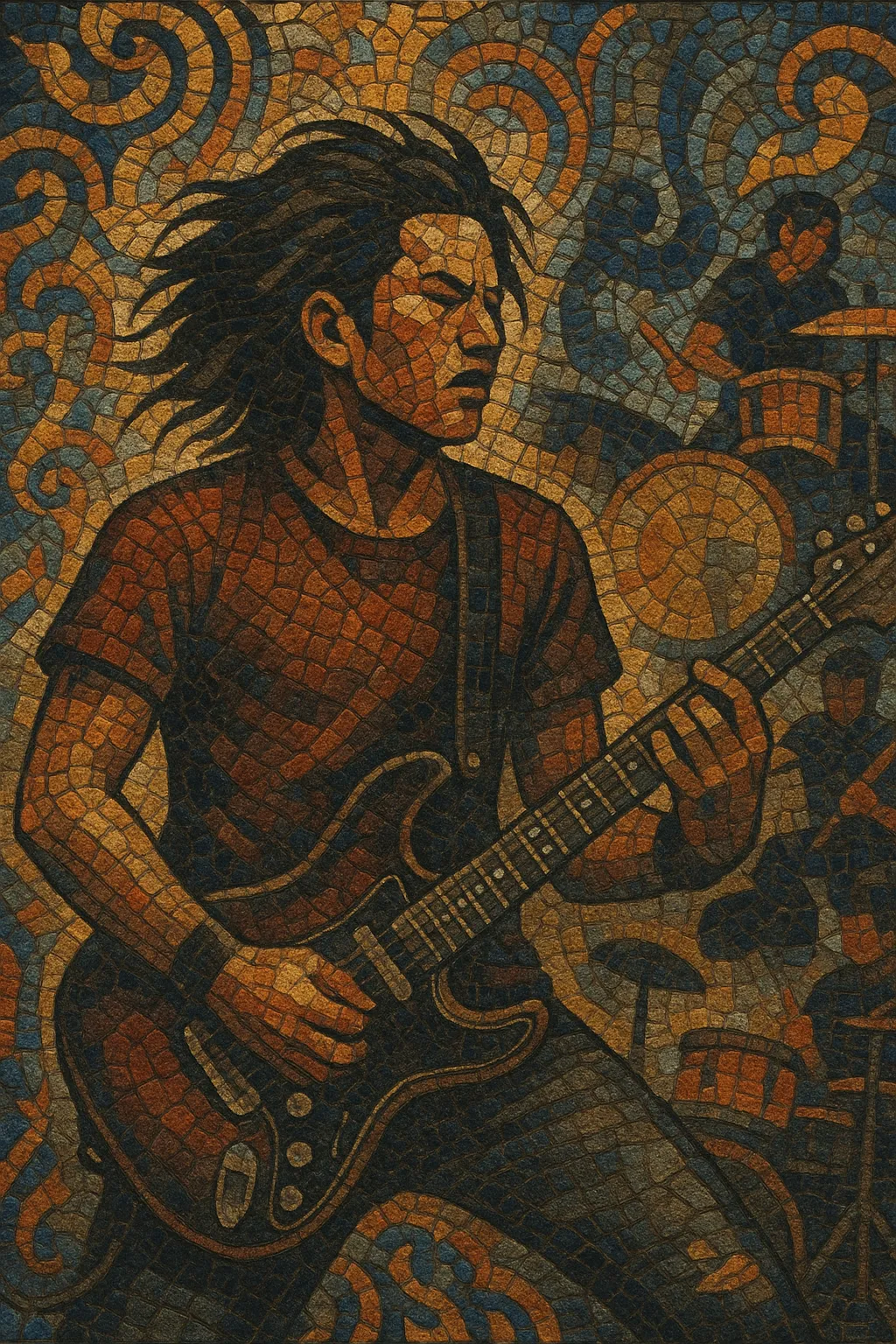Thai rock is the umbrella term for rock music created in Thailand, blending Western rock idioms with Thai melodic sensibilities, rhythms, and lyrical themes. It grew from 1960s "wong shadow" bands that covered The Shadows and surf music, and evolved into distinctive hard rock, alternative, and stadium-ready styles.
Across decades, Thai rock has fused electric guitars and drum kits with Thai vocal phrasing, pentatonic and Luk Thung/Luk Krung-tinged melodies, and lyrics that range from youthful romance and nostalgia to social commentary. By the 1980s and 1990s it became a dominant force in Thai popular music, producing arena headliners and an enduring indie/alternative ecosystem.
Thai rock traces back to the 1960s, when bands in Bangkok and resort towns played "wong shadow" (วงชาต้า/วงแชโดว์) — a Thai take on instrumental rock inspired by The Shadows and The Ventures. Exposure came via American GIs on R&R during the Vietnam War and radio/club circuits, bringing surf rock, rock and roll, and garage sounds into Thai nightlife.
Through the 1970s, Thai groups adopted harder guitars and blues-rock forms, while the "Phleng Phuea Chiwit" (Songs for Life) movement blended folk-rock and protest lyricism with Thai social realities. The 1980s saw rock’s mainstream ascent: acts like Asanee–Wasan and Micro popularized modern guitar rock and new wave-influenced production, setting a template for Thai-language rock anthems and power ballads.
The 1990s brought an alternative and modern rock wave. Bands such as Moderndog and Silly Fools fused grunge, Britpop, and alt-rock textures with Thai melodies, ushering in a thriving indie scene and influencing fashion, visual aesthetics, and festival culture.
In the 2000s, groups like Bodyslam, Big Ass, Potato, and Paradox turned Thai rock into an arena phenomenon, combining emotive lyrics with polished, high-gain production. Rock ballads and mid-tempo anthems dominated radio, while heavier and punk-leaning scenes (e.g., Ebola and peers) expanded the spectrum.
Thai rock has continued to diversify, intersecting with electronic production, pop hooks, and regional folk elements. Legacy acts remain staples of large festivals, while indie and alternative bands sustain a club-to-festival circuit. The genre’s vocabulary—big choruses, melodic Thai vocals, and expressive guitar leads—remains central to Thai popular music identity.
Start with a strong vocal melody in Thai (Central Thai diction is common) that sits comfortably over rock chord progressions. Aim for memorable, sing-along choruses and verses that balance narrative detail with emotive hooks.
Use classic rock progressions (I–V–vi–IV, I–vi–IV–V, or minor i–VI–III–VII) and incorporate Thai-leaning melodic turns (pentatonic inflections, stepwise ornaments). Power-ballad modulations (up a semitone or whole tone) can heighten finales.
A backbeat-driven 4/4 is standard. For uptempo tracks, use straight eighths; for ballads, employ half-time drums with tom builds. Subtly reference Luk Thung/Luk Krung phrasing in fills or syncopations to localize the feel.
Core setup: two electric guitars, electric bass, drum kit, and optional keys/pads. Pair a crunchy rhythm guitar (classic rock or modern high-gain) with a lead tone featuring moderate gain, delay, and lyrical vibrato for melodic lines. Keys can add pads, piano arpeggios, or subtle synth layers in choruses.
Deliver emotive, forward vocals with clear Thai articulation. Themes often include love, longing, perseverance, and personal growth; social-commentary lyrics fit more folk-rock or Songs-for-Life leanings. Utilize call-and-response or stacked harmonies in choruses.
Structure songs as intro–verse–pre–chorus–chorus–verse–pre–chorus–chorus–bridge–final chorus. Build dynamics with clean-to-crunch transitions, drum fills into choruses, and widening stereo guitars. Master for punchy low end and bright, present vocals.
To localize, integrate Thai melodic motifs in guitar leads, employ occasional traditional percussive textures sparingly, or reference melodic contours common in Thai pop (Luk Krung) while keeping a rock backbone.


